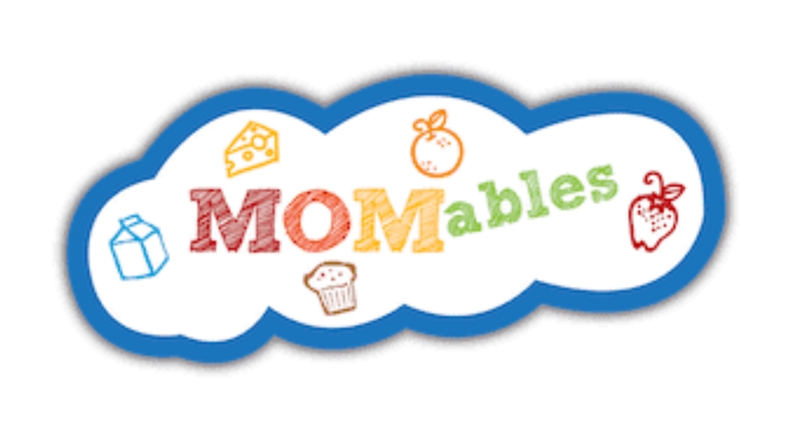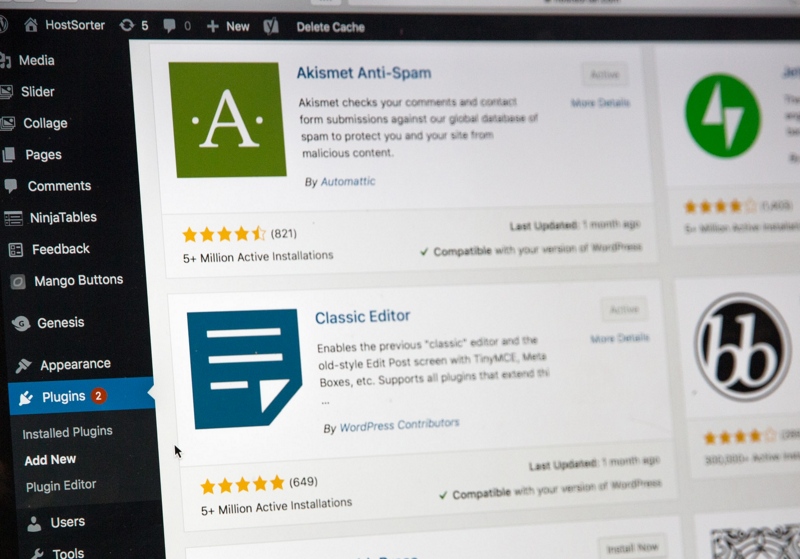Blogging Basics
How to start a Blog [Beginner's Guide]
A blog is like a romantic relationship. The beginning is the honeymoon. Full of passion. But what you need is a solid foundation that works long-term.
Otherwise, your blog will be an empty shell, like millions of other blogs on the web. And surely as many miserable relationships.
So if you want to know how to blog successfully, then this guide is for you.
In this guide you'll learn:
- What is a blog?
- How to set up a blog [6 steps]
- How to Make Money Blogging?
![How to start a Blog [Beginner's Guide]](/static/f1de8a238336825d33b166172ef2b78d/e712c/blogging-basics-hero.png)
While the default display for most blogs is usually a chronological scroll down list, some bloggers prefer to keep their content a bit more user-friendly.
Tagging posts by category or common search terms are just some of the ways bloggers can help their content reach its audience.
Why is blogging right for me?
Just watch those two guys talking about blogging:
That was way back in 2009. More than 10 years later, and all of this hasn’t changed a bit.
Blogs are universal.
Whatever people are interested in, you can blog about.
As long as it’s YOU writing it. Someone with a personality and an opinion. A real human being.
Successful bloggers are good at basically two things:
- They stay who they are.
- They create content consistently.
OK. So you give yourself the chance to write about something you love. You explore something you’re passionate about.
And one day…your micro-publishing project could become a business.
Yes, bloggers can make a living out of their work. But they rely on two things.
1. Social proof
Internet users have a kind of inbuilt skepticism. That’s because there’s just so much garbage in the web, also when it comes to blogs.
What you need is people that trust you. And more importantly, people who are willing to show how much they trust you. If they do, you get social proof.
Here’s a funny short video on why social proof is just so important:
People have to talk about you. There has to be some kind of buzz.
A blog without any comments is just empty. So take action and reach out to people. Accept the humility of blogging (as Seth Godin said earlier). And be honest.
If you’re good at it, your social proof will pay off in two ways:
- You’re an expert – Connecting with people through your content is an immediate benefit of blogging. Make your writing is as well-researched as possible! This makes it easier to earn a reputation as an expert on your chosen topic.
- You get backlinks – This will encourage people to link to your blogs from their own platforms, which increases your credibility by receiving so-called backlinks. This is extra important if you are considering affiliate marketing.
2. Passive income
The second benefit is the way you can actually make money with a successful blog.
- Do Affiliate Marketing – Bloggers can make money from affiliate marketing, and you don’t even need to be the most popular blogger in your topic to start earning.
But don’t rush. We’ll talk about passive income later on in this guide. First you need to know how to set up a blog.
Let’s break it down step by step.
- Name your blog
What’s in a name? Well, quite a bit actually. When you’re starting out, naming your blog is the first important step.
Take two points into consideration.
- Pick a name that summarises your content well.
- Make sure the name can be easily searched on Google.
Amazon Affiliate Laura Fuentes has called her blog “MOMables”. This is obviously a mixture of “Mom” and “Vegetables”.

And it sums up perfectly what Laura does: Offering healthy recipes and kitchen hacks to female family caretakers.
Our tip is to brainstorm a bit and give yourself a few options.
Many hosting services give you similar alternatives that are still free to choose or you can even use a name generator to do the work for you.
Either which way, your blog’s name will be the first thing your audience comes to know you by. So find something highly relevant and recognisable.
- Choose a hosting service
It might not sound like a big deal, but choosing a hosting service can really affect how your blog performs.
While there are a number of free platforms, bloggers interested in eventually making money off their blog might go for a more reliable, paid service.
The three S’s of domain hosting are:
- Speed
- Security
- Support
So make sure your hosting service keeps up to those three holy S’s.
- Design your blog
Now you’ve got the basics of choosing a name and web host out of the way. Bravo! It’s time to get to the real nitty gritty of blog design.
Most bloggers use popular blogging platforms. They have a simplified backend, so you don’t have to worry about things getting too technical.
Here’s a list of the most popular blogging platforms:
Most CMS platforms are extremely user-friendly, so you won’t need a computer degree just to ensure your blog looks the way you want it to look.
WordPress is a popular choice due to its simplicity and the range of plug-ins or customisations available. Over 455,000,000 websites are run on WordPress, including huge sites like Forbes and TechCrunch.

Any potential audience will use their first visual impression of your page as an indicator for your site in general. So make sure it looks appealing!
- Customise your platform
Depending on the platform and CMS you have selected, you should add some plug-ins and widgets.
Plug-ins are handy tools that help you streamline your content and how your audience sees it.

For example, image compression plug-ins will automatically reduce the time your audience spends waiting for images to load.
Another popular plug-in is EasyAzon, which helps integrate affiliate marketing links for Amazon partners.
While a plethora of tools and plug-ins are out there, make sure you keep the mantra “slow and steady wins the race” in mind.
There’s no impending deadline, just grab whichever plug-ins you think will really help you immediately, and then integrate new ones later.
Each plug-in makes the CMS a little slower, and if you install poorly maintained plug-ins, site security can also suffer. Install new plug-ins as and when the need arises.
Read More: Check out our Top list of WordPress’s most useful plug-ins for bloggers.
- Start creating your content
Once you have your name and site designed, you will probably have a good idea of where you want to begin with your content. However, as with everything, a solid strategy will help save you time and also make sure your posts follow a cohesive path.
An editorial calendar or content calendar is essentially an outline of which posts you’ll cover and on what date. This will allow you to plan key topics as well as let you productively organise your research.

Thinking ahead of time also lets you check out the competition, so you can find a way of setting yourself apart from the crowd with a fresh perspective.
But how do you come up with the topics for your calendar?
Brainstorming is basic but effective. Simply write down as many ideas or terms related to your blog topic as you can. Perhaps even talk to yourself out loud and ask yourself questions on the topic. If you have wondered about something, it is likely your potential audience has, too.
Another great option is to check out analytic tools like Google Trends. Here you can check out which terms are searched in combination with your original key topic and decide what to write about from there.

After you have come up with some strong ideas, the next step is to organise yourself and the process by using a spreadsheet. Here you can list your ideas and rank them by:
- How well they fit your blog topic?
- How much demand there is from your readers?
- How much potential blog traffic would be created?
It’s also worth checking out other bloggers in your space and discovering which of their posts have the most engagement or have been shared.
Just make sure you keep your content creative and uniquely yours!
There’s only one rule to keep in mind before you go live: Never start with a completely empty site.
Have a reserve of articles ready to publish so your audience has a chance to scroll and explore your platform a little more thoroughly. The more content you begin with, the more of a head start you give yourself on the content calendar!
- Start promoting and earning money
With your name, platform, and content calendar ready, your blog has pretty much taken shape by this point. The last item on the to-do list is to consider your audience and how they will best find your work.
The most important element in finding your audience is to promote your content.
In other words, you gotta talk to people. You HAVE to act!
Here’s some motivational proof to back things up:
Backlinko’s Brian Dean even says he spends 20% of his time on writing content and 80% on promoting it. You must reach out to people to pick up your ideas and your content to find success.
As a blogger you have countless options to promote yourself.
Try a mix of strategies and find out which one suits you best!
- Use social media – Go beyond the (social network) friend zone! Aside from sharing with your existing network of friends and family, don’t hesitate to promote your blog on relevant pages. For example, if you are writing about fashion or design, comment on a magazine’s Facebook posts with a link to your own page.
- Interview people – A great way to gain an audience is by aligning yourself with more established names. If you have a connection with someone in the blogging world that has an existing audience, you will generate both content and promotion for your own page.
- Invest in your network – Engaging with other bloggers via comments and social media is a great way to make a name for yourself in a particular field of interest. If you have a positive dynamic, more popular bloggers may give you a shout out or mention in their own content.
- Set up a mailing list – If you have worked so hard to find an audience, then the best way to ensure returning traffic is via a mailing list or subscription. Keep those traffic numbers up and let your audience feel connected to you by reaching out regularly with engaging content.
Although you may have experience clicking away those “subscribe now” prompts, pushing your audience to join a mailing list is actually a vital way to retain your audience.
Set up a signup form in your posts or have a little pop-up window on your home page, and you will accumulate email addresses quickly and easily. Once you have these subscribers, you can manage your newsletters with free services like MailChimp.

Updating your audience when you have new content drives traffic up, helps spread the word and ensures your readers won’t miss any of your work.
If there’s one thing you should know about monetizing your blog, it’s this:
Blogging Content ≠ Commercial Content.
Yep, bloggers do promote products. But they NEVER advertise.
It’s mainly thanks to the blogosphere that content marketing has risen to the most important marketing strategy today.
People trust real bloggers with honest content. They don’t necessarily trust companies.
Here are some ways for bloggers to make money:
- Affiliate marketing – You recommend products or services earning a commission.
- Sponsored posts – Companies pay you to publish a guest post on your blog.
- Selling ad space – If you have traffic on your blog, companies will pay you for ad space.
- Offering consulting – Share your expertise with corporate teams.
- Hosting webinars – Share you knowledge with users who pay for it.
Learn more with our comprehensive guide on Affiliate Marketing.
How to move on
So you have the technical details down. Your platform is live. You’ve created your content.
Just sit back with a cup of tea and chill, right?
Not quite. While running a blog isn’t especially arduous, there are a few rules to help your blog start off on the right track. Dig deeper with our actionable guides on SEO and Content Marketing, there’s plenty of useful advice to discover.


